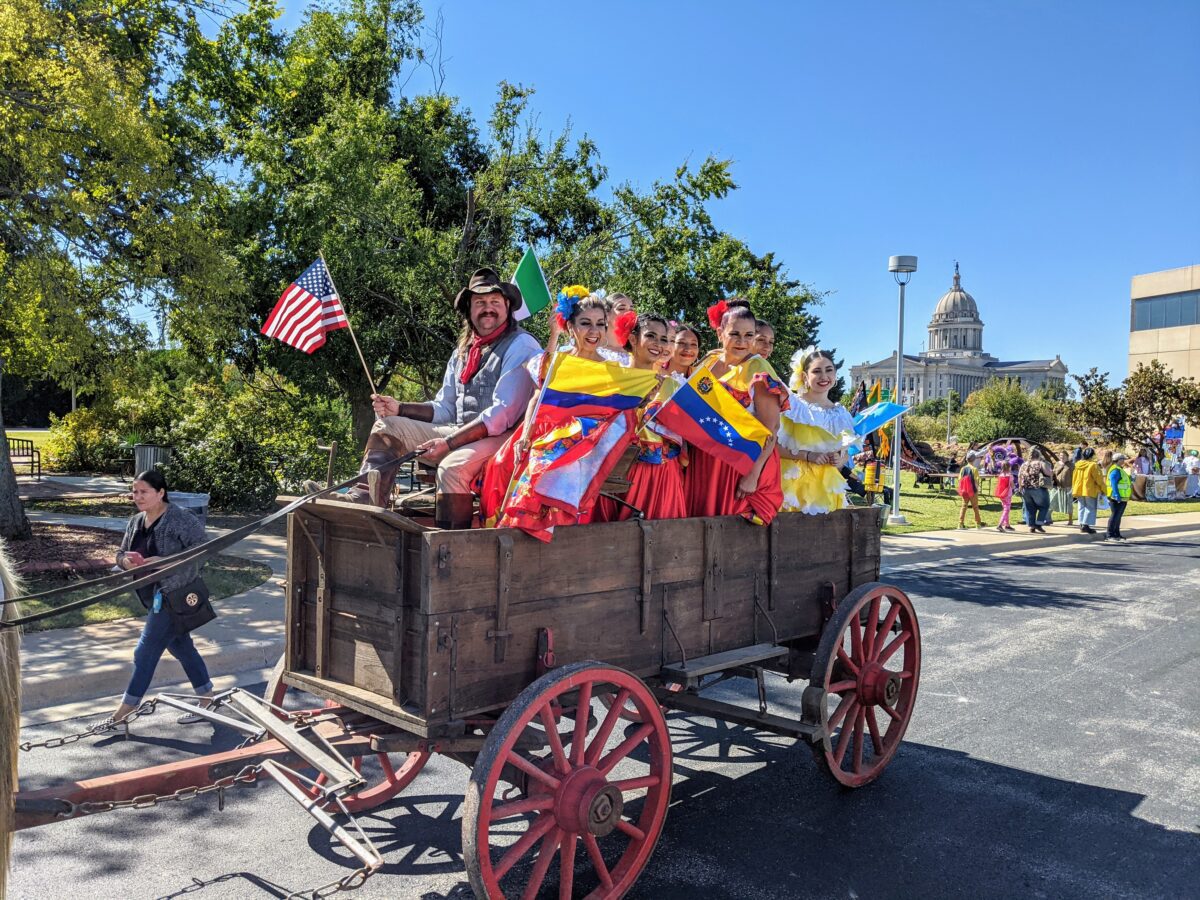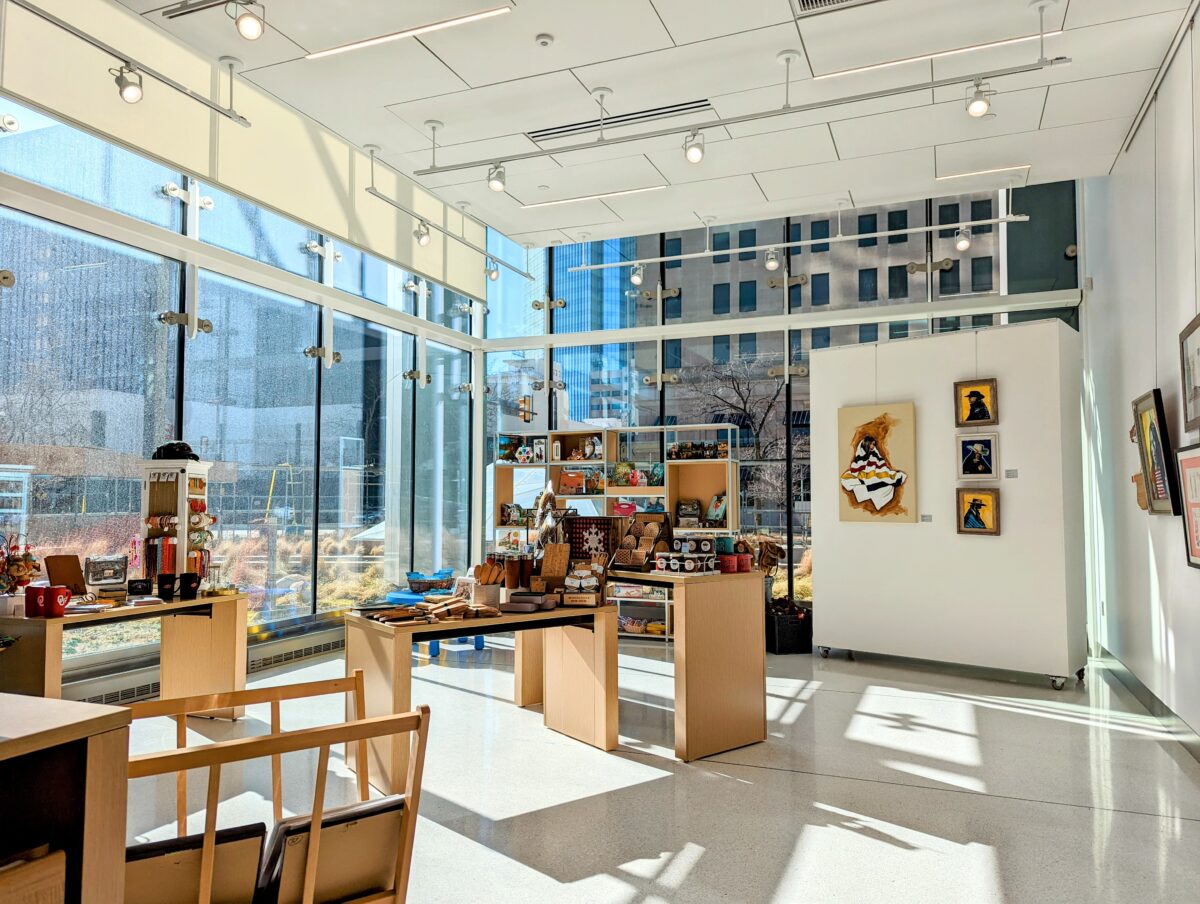There’s no shortage of experiences to enrich, educate, entertain and inform about Oklahoma’s rich and diverse history. We explore a variety of heritage tourism offerings around the state.
North America’s First People inhabited and shaped the continent thousands of years ago, and they were – and remain – integral to the fabric of Oklahoma. Oklahoma’s only public-access, prehistoric American Indian archaeological site is the Spiro Mounds Archaeological Center near Spiro. With interpretive exhibits and trails on the 150-acre site, the area has 12 mounds, which were in use from AD 800 to AD 1450.
By 1541, explorers traversed the future Oklahoma. They noted expansive plains, diverse flora and fauna, Indigenous people and massive American bison herds. Bison did, indeed, roam the continent, numbering in the millions. But with only small numbers remaining by the late 1800s, several small herds arrived in Oklahoma during 1907, launching the Wichita Mountains Wildlife Refuge. The 60,000-acre preserve, with wildlife-dependent recreation, boasts a beautiful and mixed landscape, innumerable free-roaming animal species and a visitors center.
The federal government began forcibly moving many Indigenous tribes into Indian Territory by 1830. Then, after the Civil War, federal treaties imposed harsh provisions on the tribes, and split Indian Territory into two halves. With Oklahoma Territory making up approximately the western half of future Oklahoma, the end neared for tribal sovereignty. As well, military massacres of tribes were catalysts for the Plains Indian Wars from 1868 to 1975. As part of these, Lt. Col. George Custer led the 7th U.S. Cavalry massacre of a Cheyenne village during 1860. The Washita Battlefield National Historic Site, located near Cheyenne, offers a visitors center and museum covering the event.

The U.S. opened future Oklahoma land to white settlement through 14 land runs, land allotments, lotteries and sealed bid openings, with the first in 1889. Available land sparked entrepreneurial Black Americans who formed 50 towns. Visitors to the Boley Historical Museum, located in a 1929 Boley home, may view artifacts of the town’s early days as Oklahoma’s first All-Black town. Boley is one of only 13 All-Black towns that still exists today.
Of the original 60,000-acre ranch owned by the father of Oklahoma’s “Favorite Son,” Will Rogers, a 162-acre ranch remains – the Will Rogers Birthplace Ranch located near Oologah. The site includes the family’s 1875 Greek Revival home. Of mixed-blood Cherokee ancestry, Rogers operated the ranch briefly, renaming it the Dog-Iron Ranch; the venue is part of a working ranch. A globally famous entertainer, Rogers’ (1879-1935) expert roping skills remain legendary. The ranch features educational opportunities among other amenities. *Editor’s note: Upcoming renovations may cause closings to the ranch. Check willrogers.com/birthplace-ranch for availability.
The Gene Autry Oklahoma Museum houses the world’s largest collection of vintage, cowboys-in-entertainment memorabilia. Named after the wildly popular singing cowboy of the 1930s and 1940s, known as the “King of the Cowboys,” the museum is located in the town of Gene Autry, formerly Berwyn. The museum informs visitors about cowboy life, Old West living, and movies and music from the 1920s to 1950s.
The Tulsa Race Massacre is memorialized through exhibits at Tulsa’s Greenwood Cultural Center. In 1921, white supremacists burned the Greenwood District, destroying 2,000 businesses, murdering over 300 African Americans, and leaving 10,000 homeless. Nearby, the Greenwood Rising Black Wall Street History Center honors victims and helps today’s citizens to forge paths of reconciliation.

Red Earth Art Center is a Native American art and cultural hub in Oklahoma City, using extensive collections, exhibitions, programs, and events to showcase Indigenous artists. The First Americans Museum is a 175,000 square foot museum in Oklahoma City, focusing on Oklahoma’s current 39 First American Nations. The venue shares the cultural diversity, history, and contributions of First Americans, and includes numerous amenities and programs.
Located in Oklahoma City, the state of Oklahoma’s history museum is the Oklahoma History Center, which is an eighteen-acre, 215,000 square foot learning center.
“Under the OHS umbrella, we have 24 museums and sites statewide,” says Jessica Brogdon, director of communications for the OHS. “Our flagship is the Oklahoma History Center, which houses the OHS research center that is open to the public at no charge, with staffers who want to help you. Genealogy is a big draw for researchers. Our five galleries cover all types of history including Native American, African American, Oklahomans in space, the musical Oklahoma, military and more. We do a lot of programming for school children and adult education. We have historic homes, military sites, museums in general and experiences statewide.”
The OHS provides access to many digital resources including online databases and collections, the Dawes Final Roll for the Five Tribes, land resources, and military and genealogical resources.
The National Cowboy and Western Heritage Museum is described as “America’s premier institution of western history, art and culture,” says chief marketing officer Seth Spillman. “We tell the story of the West through fine art, artifacts, the Hollywood version of ‘the West,’ and through America’s Western sport – rodeo. We also have extensive Native American collections.”
The Oklahoma City venue’s largest public event is the Memorial Day weekend Chuck Wagon Festival, now in its 32nd year. As well, lauded western art creators annually come together for the Prix de West Invitational Art Sale and Exhibition, with exhibits open to the public May 31 through Aug. 4.

Featured image: First Americans Museum; photo courtesy FAM






















